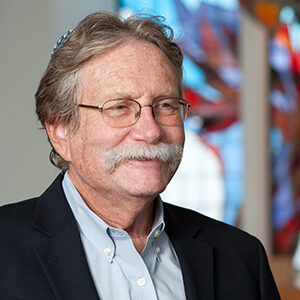
Reliving Revelation
May 19, 2023 By Gordon Tucker | Commentary | Bemidbar
The fourth book of the Torah (“Bemidbar Sinai”) begins with a census of the (male) heads of clans among the Israelites in the second year of their freedom. And then, it lays out the pattern according to which the 12 tribes and the religious functionaries (levi’im and kohanim) are to set up camp in the wilderness. When you read it, you are struck by the attention to detail and good order, something which is rather typical in documents with a priestly source.
Read More
Between Suns: Twilight in Rabbinic Sources
May 15, 2023 By Sarit Kattan Gribetz | Public Event video | Video Lecture
Rabbinic sources imagine the period of twilight between the six days of creation and the Sabbath to be a mystically productive time. It was then, they explain, that God created the rainbow and the manna, letters and writing, Abraham’s ram and Moses’s staff. But when is twilight and how long does it last? Does it belong to the day that is ending, the day that is beginning, or to both days at once? These questions are not merely theoretical—their answers determine important matters of Jewish practice.
Read More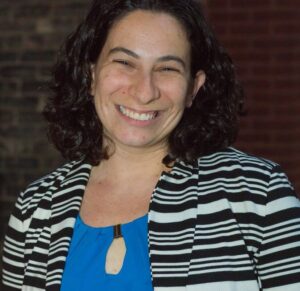
Growing Into Torah
May 12, 2023 By Megan GoldMarche | Commentary | Behar | Behukkotai
For this week’s parashiyot, Behar-Behukkotai, I might ask: What is something that you took or borrowed from someone that you know it is time to return, perhaps because it is the right thing to do or because it will make you feel lighter? This can be a physical thing like a book or shirt, or something intangible like the hope or support you received from someone. If you are hosting shabbat dinner this week I encourage you to try it out, with a brief explanation of the ideas of Jubilee and returning land to its original owners that appears in this week’s parashah.
Read More
Talmudic Writings on the Passage from this Life to the Next
May 8, 2023 By David C. Kraemer | Public Event video | Video Lecture
It may surprise you to learn that, in the opinion of Talmudic teachings and the traditions that emerge from them, death is not a moment but a process—a transition that leads from one stage of life (which we call “life”) to another (which we call “death”). These beliefs have profound implications for our understanding of Jewish rituals of death and mourning, Jewish theology, and much else. Prof. Kraemer offers a close reading of the texts that discuss these rituals as well as the beliefs underlying them.
Read More
The Problem of Embodied Perfection
May 4, 2023 By Lauren Tuchman | Commentary | Emor
Parashat Emor (Leviticus 21–24) opens with a passage describing limitations placed on individuals whom a kohen (priest) may mourn or marry, as well as limiting sacrificial service in the Mishkan to those who are able-bodied. We learn in Leviticus 21:17 that any kohen who has a mum—blemish or defect—is explicitly forbidden from “offering the food of his God” (21:17). Kohanim thus disqualified include those who are blind, lame, have a limb length discrepancy, are hunchbacked, have a broken limb, and many others. They are forbidden from ritual leadership throughout the ages; though not stripped of their priestly status and are permitted to eat sacrificial meat. They are not permitted to come behind the curtain or approach the altar. They mustn’t profane these places which God has sanctified (21:22–23).
Read More
Can Citizens Be Friends?
May 2, 2023
How much divisiveness, anger, contempt, distrust, and fear can democratic citizens have for one another before a democratic society irreparably weakens? Political philosophers since Aristotle have wondered about what citizens owe one another; whether they ought to recognize and respect one another’s views, profound disagreements notwithstanding. The ideal of mutual respect among democratic citizens as a foundation for a thriving civil society is called “civic friendship.” Join us as we explore this idea and its potential for diminishing the “civic enmity” that afflicts the US today.
Read More
Sarah’s Laugh: Doubt, Trust, and the Ambiguity of the Womb
May 1, 2023 By Mychal Springer | Public Event video | Video Lecture
On Rosh Hashanah we read about two central biblical characters, Sarah and Hannah, who after facing infertility for many years are told that they will conceive. Many years ago, when I was undergoing fertility treatments and listened to these stories on Rosh Hashanah, I felt as if my struggles were actually at the heart of Jewish religious experience, selected by the rabbis to echo in the birth of every new year for generations of Jews.
Read More
Making God Holy
Apr 28, 2023 By Amram Altzman | Commentary | Aharei Mot | Kedoshim
Parashat Kedoshim, the second of the two parashiyot that we read this week, ends just as it begins: with an imperative for us, the Children of Israel, to be holy. Our parashah opens with, “קדשים תהיו/You shall be holy,” and the penultimate verse tells us that, “והייתם לי קדשים/You shall be holy to Me, for I God am holy, and I have set you apart from other peoples to be Mine” (Lev. 20:26). Although almost identical, our parashahends with the idea that we are not just holy in general, but are specifically designed as holy to God. How, then, are we supposed to not just be holy, but holy to God?
Read More
The Blasphemer in Leviticus: A Marginal Figure
Apr 24, 2023 By Alan Cooper | Public Event video | Video Lecture
The Bible abounds with characters who transgress boundaries, for better and for worse. One of these characters who comes to a bad end is the half-Israelite, half-Egyptian blasphemer in Leviticus 24:10-16, 23. It’s clear that the Bible wants this story to show the dire consequences for blasphemy, but why is the identity of the blasphemer so specific, and how does this story relate to other laws outlined in the same chapter of the Torah? We explore these issues with the aid of both traditional and modern critical commentary.
Read More
It Passes and We Stay
Apr 21, 2023 By Jan Uhrbach | Commentary | Metzora | Shabbat Rosh Hodesh | Tazria
The double parashiyot of Tazria and Metzora are devoted in their entireties to the Biblical notion of tumah, usually translated as “impurity.” In them, we learn three of the major sources of tumah: childbirth (Lev. 12); a condition known as tzara’at, which can manifest on skin, clothing, or the walls of one’s house (Lev. 13–14); and bodily secretions (Lev. 15). The two other primary sources of tumah are touching or carrying the carcasses of certain animals (Lev. 11) and contact with a human corpse (Num. 19).
But what is the essential nature of tumah, and what does it have to do with Emily Dickinson’s poem?
Read More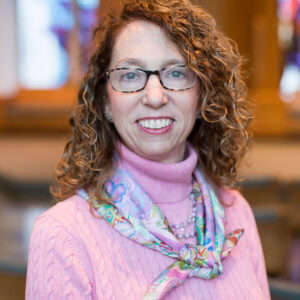
Defying All Categories: Witches in the Talmud
Apr 17, 2023 By Marjorie Lehman | Public Event video | Video Lecture
Together we explore the story of Rav Nachman’s daughters and examine their transformation from daughters and wives to witches. Taken into captivity and then returned, they emerge as women on the margins of rabbinic culture. For the rabbis this transformation represents a great challenge to the world order and thus is an expression of their deepest anxieties and fears where they must face that certain things are not within their control. In our reading of this story, we see how the women who are moved from inside the family to the margins of rabbinic life and culture reminds us of our own complicated journeys navigating where it is we are, and where it is we want to be.
Read More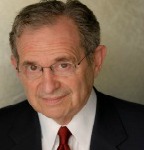
A Love That Transforms
Apr 14, 2023 By Leonard A. Sharzer | Commentary | Shemini
Commentaries through the ages have focused on the actions of Aaron’s eldest sons, asking whether being slain by God’s holy fire was, in fact, a punishment—and if so, what exactly it was that they being punished for. Most commentators conclude that the deaths of Nadav and Avihu were indeed punishment, but disagree as to the nature of their transgression: they were drunk when they entered the sanctuary; they were improperly clothed; they had not washed their hands and feet; they were unmarried; they had entered the holy place without authorization; or they had expounded the law before Moses, their teacher. What we can conclude from this plethora of possible explanations is that no one knows for sure why they were killed. Commentators are equally intrigued and perplexed by Moses’s statement to Aaron, and Aaron’s subsequent silence, in the face of this horrific tragedy.
Read More
Leaving Egypt with Compassion and Justice
Apr 8, 2023 By Ben Levy | Commentary | Pesah
The Torah reading for Shabbat Hol Hamoed Pesah (Exodus 33:12–34:26) describes the aftermath of the Golden Calf. How do we make sense of this choice?
Read More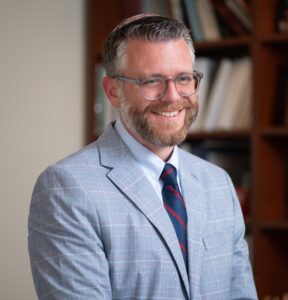
The Primacy of Questions
Mar 31, 2023 By Joel Seltzer | Commentary | Shabbat Hagadol | Tzav | Pesah
The truth is, of all the Jewish holidays of the year, Pesah, requires the most forethought, the most planning, the most cleaning, and yes, the most questions! The Jewish tradition understands deeply that ritual does not simply “occur,” instead it is the result of painstaking preparation and “beginning with the end in mind.”
Read More
Liberating our Planet: Climate Torah for the Passover Seder
Mar 31, 2023 By JTS Dayenu Circle | Commentary | Pesah
This year for Passover, JTS is proud to share Liberating our Planet: Climate Torah for the Passover Seder. Passover is an annual reminder that profound changes to our lived reality are possible, and now more than ever, we as a Jewish community need to pursue profound action to stop the climate crisis. This project is […]
Read More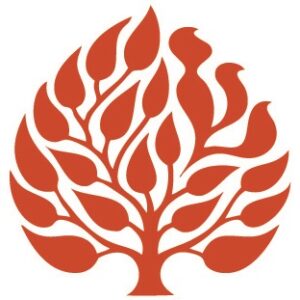
Between the Lines: The Kabbalistic Tree
Mar 29, 2023 By Library of the Jewish Theological Seminary | Public Event video
The Kabbalistic Tree, by J.H. Chajes, is the first book to explore the esoteric artifacts at the heart of Jewish mystical practice for the past 700 years: ilanot (trees). Melding maps, mandalas, and mnemonic memory palaces, ilanot provided kabbalists with diagrammatic representation of their structured image of the Divine. Scrolling an ilan parchment in contemplative study, the kabbalist participated mimetically in tikkun, the […]
Read More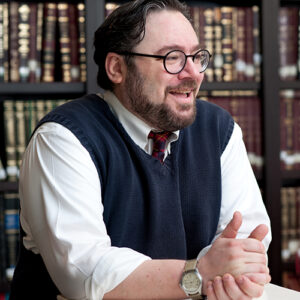
Gender Identity in Rabbinic Literature
Mar 27, 2023 By Marcus Mordecai Schwartz | Public Event video | Video Lecture
Great fans of ambiguity, the sages of the Mishnah and the Talmud loved to problematize what people of their day considered the most deeply ingrained of binaries, including gender and sex identity. For them, human understandings were imperfect, and every perspective was up for debate. Torah was Divine and perfect, but its interpreters were not. Long ago, our sages debated questions of sex difference and the extent of our capacity to know what we are. We explore some of these debates and ask if they still hold relevance for us.
Read More
What Does It Mean to Be Called?
Mar 24, 2023 By Burton L. Visotzky | Commentary | Vayikra
This week we begin reading the middle book of the Five Books of Moses, Leviticus. Its position in the Torah scroll is not just coincidental; the laws of Leviticus are central to the earliest rabbis’ understanding of Judaism. The rules in the book are indicated by its name in English (Latin, actually): Leviticus. These are the detailed regulations for the tribe of Levi, particularly that branch of the clan known as the kohanim, the priesthood.
Read More
Between Words and Pictures: Medieval Illuminated Haggadot from the JTS Library
Mar 23, 2023 By Marcus Mordecai Schwartz | Public Event video | Pesah
This session explored some of the priceless treasures in JTS’s collection of Haggadah manuscripts. We consider how the text of the Haggadah and the accompanying hand-drawn illustrations are—or are not—in conversation with each other and make some other unexpected discoveries between the covers of these rare medieval manuscripts.
Read More
On the Margins: Conversos and the Question of Jewish Belonging Throughout History
Mar 20, 2023 By Jonathan Ray | Public Event video | Video Lecture
Jewish law provides relatively clear standards for who is, and who is not, a member of Jewish society. But popular Jewish acceptance – or rejection – of certain people as “Jews” has often run counter to these legal definitions. From medieval Spain to the Ottoman Empire to modern day America and the State of Israel, conversion out of, or into, the Jewish community has raised tensions over who is (and isn’t) considered Jewish. We discuss the question of Jewish belonging throughout history by looking at groups of converts and the liminal space they inhabited on the margins of the Jewish world.
Read MoreSUBSCRIBE TO TORAH FROM JTS
Our regular commentaries and videos are a great way to stay intellectually and spiritually engaged with Jewish thought and wisdom.




